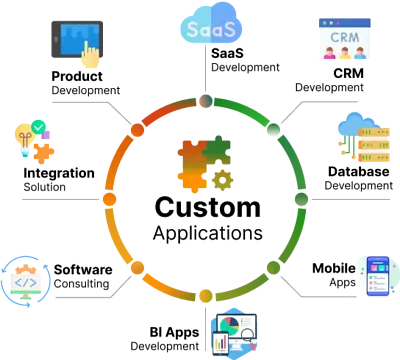Overcoming Challenges in Blockchain Software Development: Scalability, Security, and Interoperability

Blockchain has revolutionized almost all significant domains by bringing decentralization, transparency, security and efficiency through its solutions. Nevertheless, despite the many benefits, they must be addressed with Blockchain programming and innovative solutions as the Blockchain ecosystem evolves.
The key challenges include scalability, security, and interoperability, which require in-depth exploration to build a robust application. This post will discuss those challenges and how we could solve them.
We Need More Transactions to Happen Much Faster (i.e. scalability)
One of the biggest hurdles in Blockchain software product development is scalability. Scalability refers to how well a Blockchain processes transactions as the network grows. First-generation Blockchain systems such as Bitcoin and Ethereum have been having scalability issues that keep them from processing large transaction volumes. Bitcoin (limited to ~7 transactions per second; TPS) and Ethereum (~30TPS) are small compared to legacy payment networks such as Visa, which can process thousands of TPS.
The scalability bottleneck comes from the consensus mechanisms practically all Blockchains use. Security in the Bitcoin network is possible through a highly secure proof-of-work (PoW) mechanism, but this requires massive computational power and time to validate each transaction.
As the adoption of Blockchain technology increases, these limitations will increase, increasing transaction fees and network congestion.
- Layer 2 Solutions: These technologies, such as the Lightning Network (for Bitcoin) or Ethereum’s Layer 2 scaling solutions for DApps, allow transactions to be processed off-chain before settling on the main Blockchain. It eases the load on the core network, resulting in higher transaction throughput.
- Sharding: The sharding technique breaks the Blockchain network into different parallel parts (shards), each processing transactions separately. This parallel processing allows the network to process significantly more transactions, greatly increasing overall scalability.
- Proof-of-Stake (PoS): Ethereum 2.0 is adopting PoS as part of the scaling solution in one more effort to improve scalability. It can validate transactions faster and consume less energy than PoW.
A balanced Speed and security are needed to ensure the network’s decentralization.
Security: Security vulnerabilities in Blockchain Systems
Security has always been one of the critical features of Blockchain technology, but developing secure Blockchain software is still a considerable challenge. Although the cryptographic basis of Blockchain ensures that such a system offers a safe framework, weaknesses in the software—particularly in decentralized applications (DApps) and smart contracts—can still leave these platforms vulnerable to some forms of attack.
However, they also lead to significant questions around security risks, and they mainly concern intelligent contracts — self-executing contracts where the terms of an agreement between a buyer and seller are written directly into code. Once live on a Blockchain, these smart contracts are set in stone, meaning there is limited ability to rectify errors or vulnerabilities after launching the depositary contract. This was reinforced by the attack of 2016 when $50 million in ether was stolen from Ethereum due to the lousy coding of smart contracts.
There are some best practices that developers can follow to enhance security in Blockchain software development.
- Code audits: Extensively auditing the smart contract code before deploying it can uncover vulnerabilities and ensure that no exploitation occurs. It is nice to be big, but protecting the private information of millions requires independent auditing by a specialized firm.
- Formal Verification: This method involves mathematically checking the correctness of smart contract code. This significantly reduces the number of minor bugs or flaws in the code that could be exploited for attacks.
- Multi-Signature Wallets: Requiring several signatures to sign off on a transaction is another security measure, especially for your digital assets. While single-point failures and unauthorized transactions are less common in traditional systems, multi-signature wallets mitigate this nature’s most critical risk factors.
With these security strategies in place, Blockchain developers can create more secure applications, which decrease the chance of hacks and guarantee trust among the platform’s users.
Interoperability: How to Overcome Blockchain Network Silos?
Expect even more pain when developing Blockchain software due to one primary reason called interoperability. Despite being able to think of a solution, your users will always need the ability to use different Blockchain systems to communicate and work together. The bulk of Blockchains today operate in a silo, meaning it is hard to move stuff (assets or data) between chains. Another example could be transferring Bitcoin and Ethereum to one another directly, without third-party services, forging a division in Blockchains.
Cross-chain applications such as decentralized finance (DeFi) and supply chain management must reach interoperability for market innovations.
Here we have a few solutions to overcome this:
- Cross-Chain Bridges: These bridges transfer assets and data between different Blockchain networks. Polkadot Puts Communication First: Polkadot utilizes a hub-and-spoke model, where the hub chain is its relay chain, enabling communication between Blockchains to achieve interoperability.
- Ecosystem Interoperability Protocols: An increasing number of projects, such as Cosmos and Chain-link, are building protocols to facilitate Blockchain communication and create a more cohesive network.
- Standardization: Creating industry standards for Blockchain development can also facilitate interoperability by using common frameworks and protocols across disparate Blockchains.
These solutions will further develop, which will, in turn, lead to greater integration of Blockchain networks and the promise of industry-wide collaboration and innovation.
Final Thoughts
For all its promise, Blockchain development service struggles with Scalability, security, and interoperability. To combat this, developers constantly work on new solutions like Layer 2 scaling improvements, code audits, and cross-chain bridges. Overcoming these hurdles will be instrumental in Blockchain’s realization of itself as a transformative technology across various industries.
Ready to transform your business with Blockchain technology?


